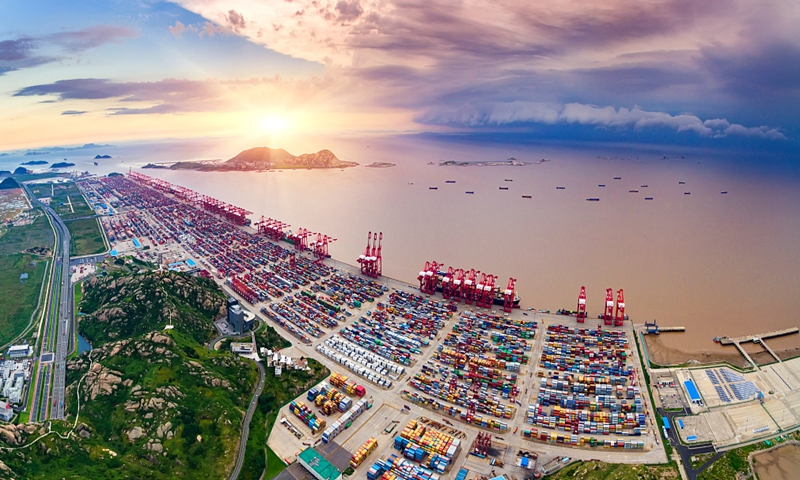
Photo:Xinhua
China's economic output in the fourth quarter of 2021 grew 4.0 percent from a year ago, official data from the National Bureau of Statistics (NBS) showed on Monday, marking the slowest pace in the full year of 2021 as the economy faced headwinds on multiple fronts, including domestic COVID-19 flare-ups.
The economy's final quarter performance picked up from the third quarter when the economy was dragged downward by factors ranging from a power crunch, supply chain issues and tightening credit in the property sector. Most of those disruptions were addressed during the fourth quarter, analysts said.
The official figure also beat market expectations. GDP growth was forecast to be 3.6 percent in the October-December quarter from a year earlier, according to a poll taken by Reuters.
China's GDP expanded 4.9 percent in the third quarter, which slowed down from the 18.3 percent growth in the first quarter and 7.9 percent growth in the second quarter in 2021.
The fourth-quarter growth rate means that China's GDP grew 8.1 percent in 2021 from a year earlier.
"The GDP growth in the fourth quarter was the slowest in 2021, but in terms of quarter-to-quarter growth, the index has accelerated from the third quarter," Tian Yun, former vice director of the Beijing Economic Operation Association, told the Global Times, noting that the economic rebound in December is stronger than expected despite clusters of COVID-19 outbreaks in parts of the country.
"It is worth noting that China's GDP in the fourth quarter of 2020 grew at 6.5 percent, which played a pivotal role in helping the country become the only major economy to maintain an expansion," Tian said, also taking note of a large base effect that makes the fourth-quarter growth slender.
Industrial output continued to gain momentum, with strong performances in the high-tech and equipment manufacturing industries. In December alone, the country's value-added industrial output, an important economic indicator, rose 4.3 percent from a year ago, data from the NBS showed, up from November's 3.8 percent.
The value-added industrial output measures the activity of designated large enterprises with an annual business turnover of at least 20 million yuan ($3.1 million).
In December, the total retail sales of consumer goods grew by 1.7 percent year-on-year, slowing from November's 3.9 percent.
Despite a modest rise in fixed-asset investment and robust growth in value-added industrial output, consumption in December was still subdued amid recurrent COVID-19 outbreaks, analysts said.
Liu Xuezhi, a senior macroeconomics expert from the Bank of Communications, told the Global Times that retail sales remained lukewarm at the end of 2021 as the resurgence of COVID-19 infections impacted catering, travel and offline consumption.
"The spread of highly transmissible Omicron variant also piled up pressure on the first-quarter economy of 2022, but such impact is likely to weaken starting in the second quarter," Liu said.
A report on the Chinese consumer confidence index released by the Capital University of Economics and Business earlier this month showed that in the fourth quarter, the overall consumer confidence index was 105.8, remaining within the 'optimistic range,' down 0.8 year-on-year and 0.6 quarter-on-quarter. Among key indicators measured, confidence in home purchasing and investment rebounded significantly quarter-on-quarter.
Looking ahead, economists and institutions generally expect China's economy to grow by about 5 percent in 2022. The World Bank estimated a growth of 5.1 percent, Deutsche Bank about 5 percent, and Morgan Stanley 5.5 percent.




